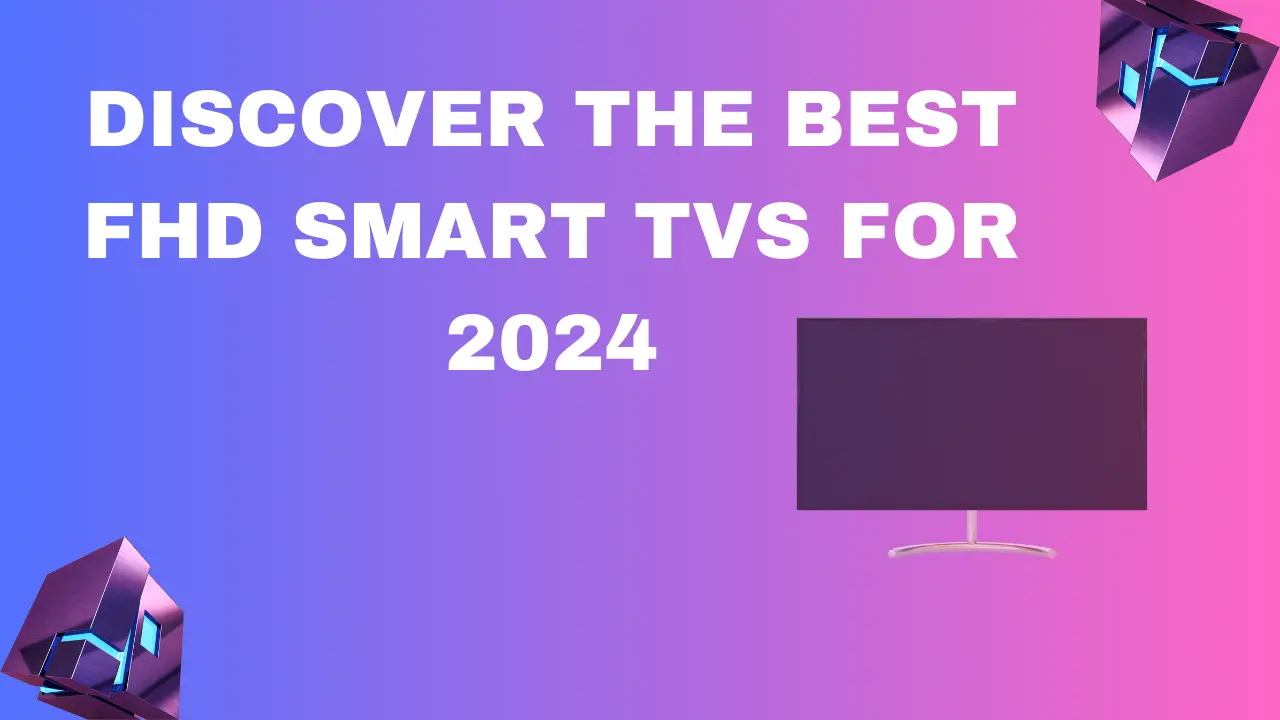
Smart TVs have become increasingly popular in recent years. As they can be connected to the internet, smart TVs have grown in popularity as more and more people use them for entertainment. Smart TVs are becoming more and more popular, but there are also several myths and misconceptions about them that can cause confusion and misunderstandings. To better appreciate the advantages and constraints of this technology, it is crucial to distinguish fact from myth when it comes to smart TVs. To help you decide whether a smart TV is a correct choice for you, we will clarify some of the most common misconceptions about them in this blog.
10 Common Smart TV Myths
- Smart TVs are better than regular TV.
- Features of all Smart TVs are the same.
- Smart TVs are expensive.
- Smart TVs have voice assistants.
- Smart TVs are easy to setup.
- Smart TVs are compatible.
- Need a streaming device with Smart LED TV.
- Smart TVs have good internet connectivity.
- Smart TV has a high level of security.
- Smart TV can replace your computer.
i. Smart TVs are Better than Regular TV
Smart TVs have grown in popularity because they have enhanced functions and capabilities. The ability to connect to the internet and access a variety of material and streaming services is one of the key advantages of smart TVs over traditional TVs.
You can simply access well-known streaming services like Netflix etc from your TV with a smart TV. The lack of additional hardware, such as streaming sticks or boxes, makes it easier and more affordable for customers.
A wide range of additional capabilities are also available on smart Televisions, such as Google Assistant which may be used to operate the TV using voice commands. When looking for material or controlling the volume without remote control, this feature can be especially helpful.
To provide a more seamless and connected home entertainment experience, smart TVs can also connect to other smart home appliances like smart speakers and home automation systems.
Additionally, a lot of smart Televisions have cutting-edge features like screen mirroring that lets you project material from your tablet or smartphone directly onto the screen of your TV. When sharing pictures, movies, or presentations with a group of people, is quite helpful.
ii. Features of All Smart TVs are the Same
The idea that all smart TVs have the same functions is one of the most widespread misconceptions about them. But nothing could be further from the truth than this. When buying a smart TV, do your research because different manufacturers and models have different features.
For instance, some smart TVs are equipped with Alexa or Google Assistant while others don’t. High Dynamic Range (HDR) and Dolby Vision are two characteristics that some smart TVs offer while others do not.
Similar to how certain smart Televisions may focus more on offering a high-quality streaming experience, others may have more sophisticated gaming features. More connectivity choices, like numerous HDMI connectors or USB ports, may be available on some smart TVs than others.
It’s crucial to select a brand and model that are user-friendly and simple to use because different smart TV brands may have distinct user interfaces.
Compatibility with streaming services is an additional consideration. Although the majority of smart Televisions give users access to well-known streaming services like Netflix, some may not include all streaming apps. Those who like a certain streaming service that is not offered on their smart TV may find this frustrating.
iii. Smart TVs are Expensive
One misconception regarding smart TVs is that the average consumer cannot afford them. This is not always the case, though. While some smart TVs can be expensive, there are also less expensive versions available, opening up the market for smart Televisions to more people.
One aspect that can affect the price of a smart TV is the brand and model. While more budget-friendly manufacturers like WegaFlix provide smart Televisions with comparable capabilities at a lesser price, with good features.
The size and resolution of the screen are other elements that may have an impact on a smart TV’s price.
While some smart Televisions may cost more than standard TVs, it’s crucial to keep in mind that they frequently offer more sophisticated features and capabilities, including built-in streaming services, voice assistants, and smart home connectivity. As a result, they become a more affordable choice over time because they do away with the need for extra equipment and subscriptions.
In addition, WegaFlix offer deals and discounts on smart TVs throughout the year, making them more accessible for budget-conscious buyers.
iv. Smart TVs have Voice Assistants
Smart TVs are becoming increasingly popular due to their improved capabilities and features, including built-in voice assistants. As they enable users to manage their TV using voice commands, voice assistants like Amazon’s Alexa, and Google Assistant has emerged as key selling point for many smart Televisions.
Users can simply change the stations, change the volume, look for content, and even operate other smart devices in their house with a voice assistant, all without needing to utilise a remote control. Those with restricted mobility or those who simply prefer a hands-free experience may find this to be especially helpful.
Voice assistants on smart TVs can offer users personalised recommendations based on their viewing preferences and history in addition to basic controls.
v. Smart TVs are Easy to Setup
One of the most common myths about smart TVs is that they are easy to set up. While it’s true that smart TVs are designed to be user-friendly.
One of the main challenges in setting up a smart TV is connecting it to the internet. While most smart TVs come with built-in WiFi. In some cases, you may need to purchase a separate wireless adapter or use an Ethernet cable to connect your TV to the internet.
Another challenge is navigating the settings and menus on the smart TV. While smart TVs are designed to be easy to use, the user interface can be confusing and overwhelming, especially for those who are not tech-savvy. Some smart TVs may also require updates or firmware upgrades, which can be time-consuming and require technical knowledge.
vi. Smart TVs are Compatible
One of the common misconceptions about smart TVs is that they are more compatible with different devices. However, this is not necessarily true. While smart TVs may have more advanced connectivity options, such as Bluetooth and WiFi, they can still face compatibility issues with different devices.
Smart TVs typically have a range of input ports, including HDMI, USB, and Ethernet, which allow users to connect a variety of devices, such as gaming consoles, streaming devices, and soundbars. However, not all devices may be compatible with a smart TV’s input ports or require additional adapters or cables to connect.
Moreover, while smart TVs may have built-in apps and streaming services, not all devices may be compatible with these services. Another factor that can affect compatibility with smart TVs is the age of the device. Older devices may not have the necessary hardware or software to connect to a smart TV, or they may not be able to take full advantage of the features and capabilities of a smart TV.
vii. Need a Streaming Device with Smart LED TV
There is a prevalent misperception that Smart LED TVs can handle all of your streaming demands without the need for an additional streaming device. Yet, this is a misconception that should be eliminated.
While Smart TVs do come packed with streaming capabilities, they generally lack the same degree of performance and versatility as dedicated streaming devices. Smart TVs may not have access to all of the streaming services that you want to use, and they may also be slower to load and browse through content.
Moreover, Smart TVs may not receive frequent upgrades to their streaming apps and software, which can lead to compatibility issues and other problems over time. On the other hand, dedicated streaming devices are built to receive regular upgrades and are optimised for streaming performance, making them a more trustworthy option.
Another issue with relying entirely on a Smart TV for streaming is that their built-in interfaces can be complicated to use. With a dedicated streaming device, you may enjoy a more user-friendly interface, adjustable settings, and a wider selection of options to enhance your streaming experience.
viii. Smart TVs have Good Internet Connectivity
Another common misconception about Smart TVs is that they have strong internet access and can easily manage all of your online needs. Although Ethernet and WiFi are included in Smart TVs, the quality of the internet connectivity varies substantially between models and manufacturers.
The truth is that several variables, like the intensity of the WiFi signal, the distance between the TV and the router, and the router’s quality, can have an impact on a Smart TV’s ability to connect to the internet. This can lead to slow buffering times, interrupted streaming, and even disconnections, which can be unpleasant for consumers.
While Smart TVs do come with internet connectivity, it is important to understand that the quality of the connection can vary and may not always be reliable. To ensure a better streaming experience, it may be worth investing in a dedicated streaming device or taking steps to secure your Smart TV and home network.
ix. Smart TV has a High Level of Security
There is a common misconception regarding Smart TVs that they have a high level of security and are less prone to cyber-attacks compared to other devices. Unfortunately, this is not true, as Smart TVs can be just as subject to security vulnerabilities as other internet-connected devices.
One of the main causes of this is the fact that outdated or unpatched software is frequently used by Smart TVs, making them susceptible to security flaws and other sorts of assaults. Furthermore, certain Smart TVs can have weak security settings or default passwords, which might make them simpler to hack into.
x. Smart TV can Replace your Computer
Another common misconception is that Smart TVs can replace your computer and provide all the functionality you need for work. Moreover, this is simply not true, and there are several reasons why Smart TVs cannot replace a computer.
Firstly, Smart TVs are designed for entertainment purposes, such as streaming movies and TV shows, playing games etc.
Secondly, Smart TVs typically do not have a keyboard or mouse, which makes it difficult to perform certain tasks, such as typing up documents, creating spreadsheets, or designing graphics.
Thirdly, Smart TVs do not have the same processing power or storage capacity as a computer.



